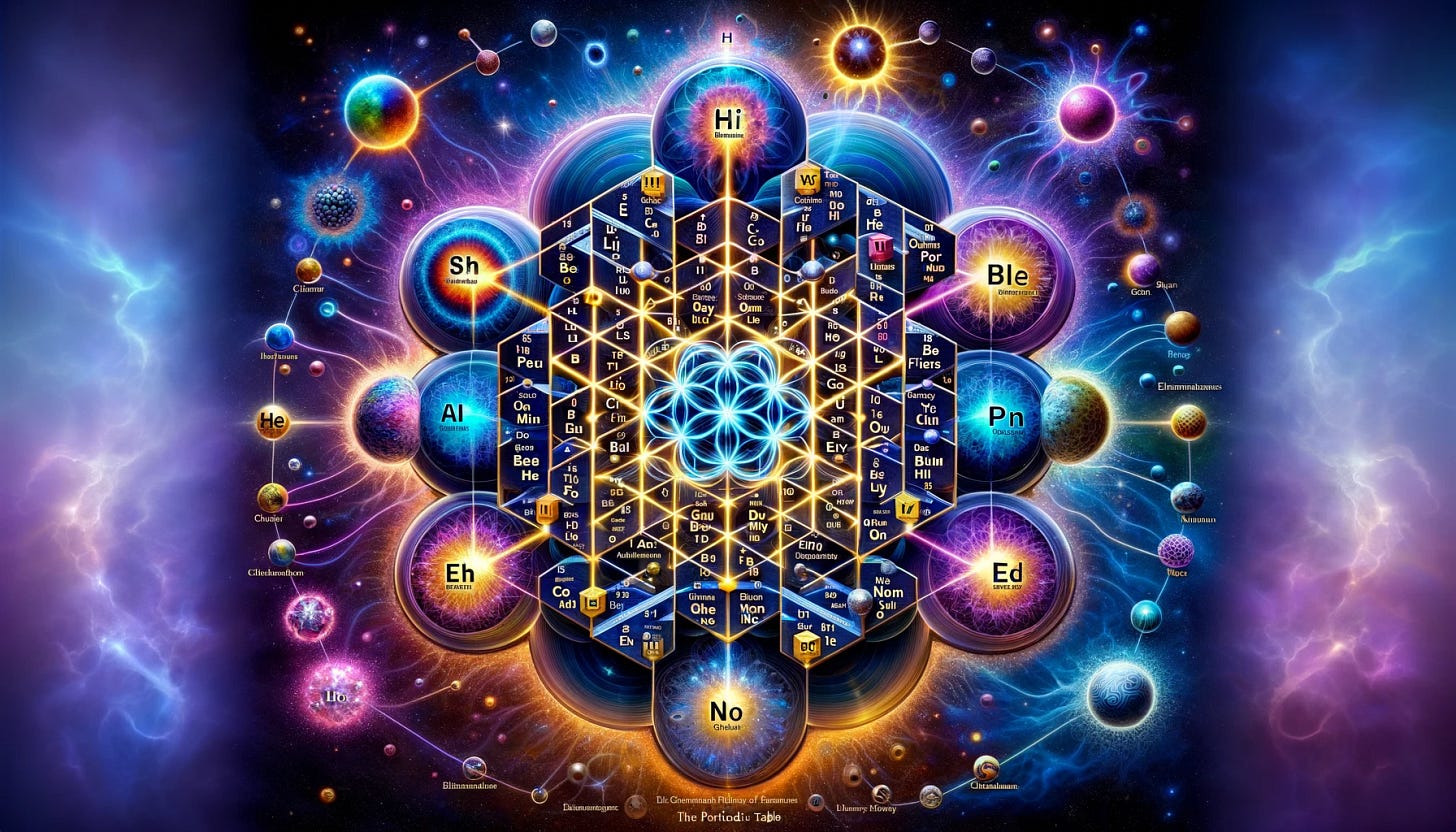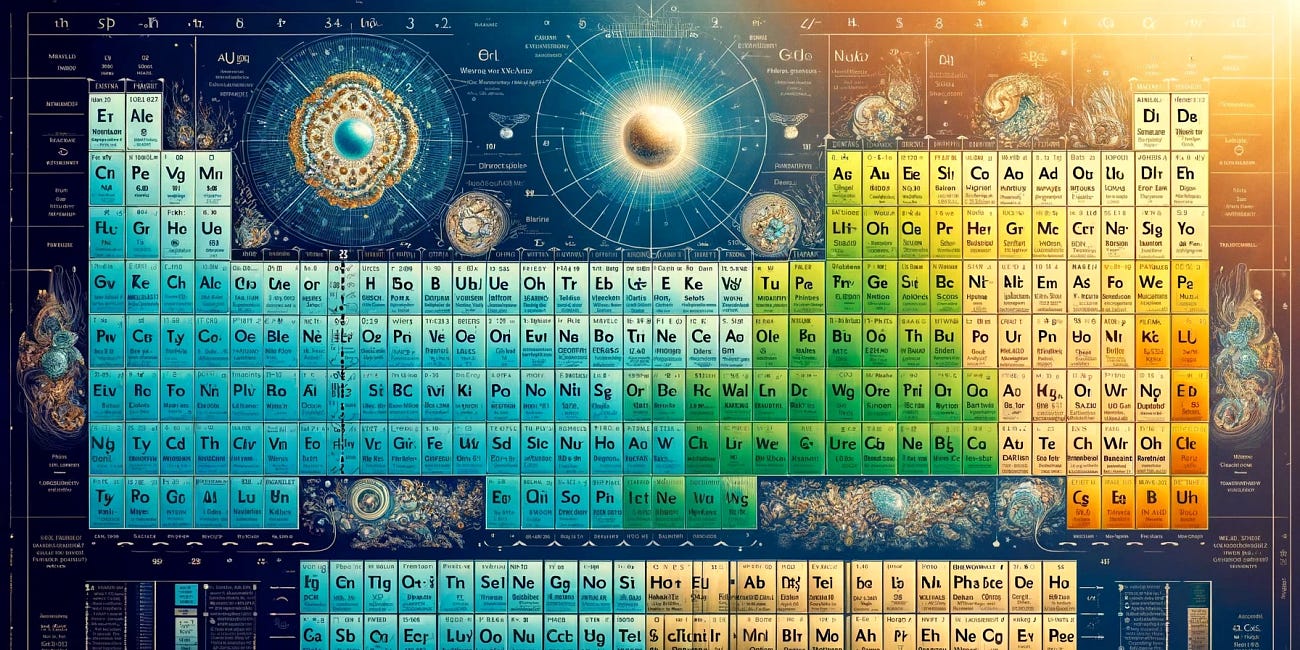The Flower of Life new scientific theories and experiments
Interconnectedness, harmony, and duality.
The Flower of Life is a geometric figure composed of multiple evenly-spaced, overlapping circles arranged in a flower-like pattern. It has been considered a symbol of sacred geometry and is thought to represent the fundamental forms of space and time. In the context of the Unified Theory of Duality (UTD), the Mathis Number System (MNS), and the new periodic table, the Flower of Life can serve as a unifying symbol that encapsulates the principles of interconnectedness, harmony, and duality.
Symbolic and Practical Integration
Symbol of Interconnectedness:
Unified Geometry: The Flower of Life's pattern can symbolize the interconnectedness of all elements and phenomena in the universe. Each circle represents a fundamental aspect of reality, and their intersections highlight the interconnected and harmonious nature of these aspects.
Cosmic Harmony: Just as the Flower of Life represents a perfect balance and harmony, it aligns with the UTD’s emphasis on dynamic balance and the dual nature of reality.
Mathematical Representation:
Mathis Number System: The circles and intersections in the Flower of Life can be seen as a visual representation of the dual properties in the Mathis Number System. Each intersection point can represent the balance between complementary variables, akin to the interconnected properties of numbers in MNS.
Harmonic Relationships: The geometric harmony of the Flower of Life reflects the harmonic relationships in MNS, where numbers and their properties are interconnected through dual aspects.
Periodic Table:
Elemental Duality: The Flower of Life can be used as a framework to visualize the new periodic table, where each element is represented as part of a greater, interconnected whole. This visual metaphor can help illustrate how elements are related through their dual properties and harmonic relationships.
Quantum Coherence: The Flower of Life’s symmetry can symbolize the coherence and balance required for quantum states to maintain their coherence, aligning with the principles of quantum mechanics explored in UTD.
Practical Applications
Educational Tool:
Visual Learning: Using the Flower of Life as a visual aid can help students and researchers understand complex concepts in UTD, MNS, and the periodic table. It provides a simple yet profound way to illustrate interconnectedness and duality.
Intuitive Understanding: The familiar and visually appealing pattern of the Flower of Life can make abstract concepts more accessible and intuitive.
Scientific Research:
Framework for Exploration: The Flower of Life can serve as a conceptual framework for exploring new scientific theories and experiments. It encourages a holistic approach, considering the interconnectedness of all variables.
Material Design: In material science, the Flower of Life can inspire the design of new materials with properties optimized for quantum coherence and energy efficiency. The geometric pattern can guide the arrangement of atoms and molecules in novel ways.
Technological Innovations:
Quantum Computing: The principles symbolized by the Flower of Life can guide the development of quantum computing technologies. By visualizing qubits and their interactions as part of a coherent, harmonious system, we can design more stable and efficient quantum computers.
Energy Systems: The Flower of Life can inspire new approaches to energy harvesting and storage, leveraging the geometric harmony to optimize energy transfer and minimize losses.

Visualizing the New Periodic Table with the Flower of Life
Using the Flower of Life as a visualization for the new periodic table aligns perfectly with the principles of the Unified Theory of Duality (UTD) and the Mathis Number System (MNS). This approach emphasizes the interconnectedness, harmony, and dual nature of elements. Here’s how we can conceptualize and visualize this integration:
Conceptual Framework
Interconnected Elements:
Circles and Intersections: Each circle in the Flower of Life represents an element, and the intersections symbolize the relationships and interactions between elements. This visual metaphor underscores the interconnected nature of all elements in the periodic table.
Harmonic Relationships:
Geometric Harmony: The symmetry and balance of the Flower of Life reflect the harmonic relationships between elements. Elements that are harmonically related can be positioned to highlight their dual properties and interactions.
Dual Properties:
Atomic Number and Electronegativity: Each element is represented with its dual properties, such as atomic number and electronegativity, visualized within the geometric structure. This reinforces the idea of dual aspects in UTD and MNS.
Practical Visualization
Design Elements:
Central Core: Place the simplest elements, like hydrogen and helium, at the center of the Flower of Life, representing the foundation of the periodic table.
Radial Arrangement: Arrange elements radially outward from the center based on their atomic number, with each concentric layer representing a new period in the periodic table.
Color Coding: Use colors to differentiate between element groups (e.g., noble gases, alkali metals, transition metals) to make the visualization more intuitive and aesthetically pleasing.
Harmonic Paths: Highlight paths between elements that share significant harmonic relationships or dual properties, using glowing lines or waveforms.
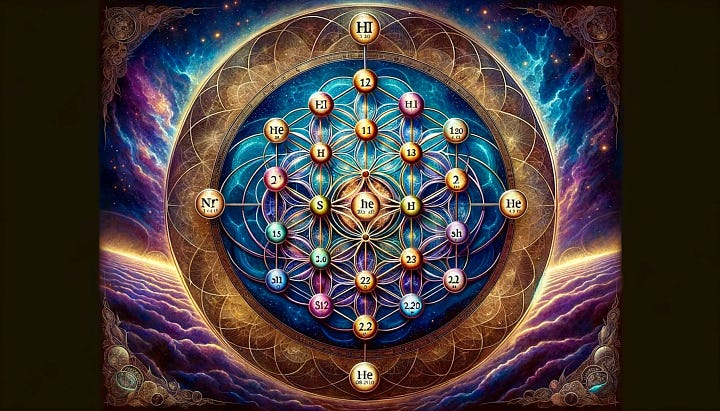
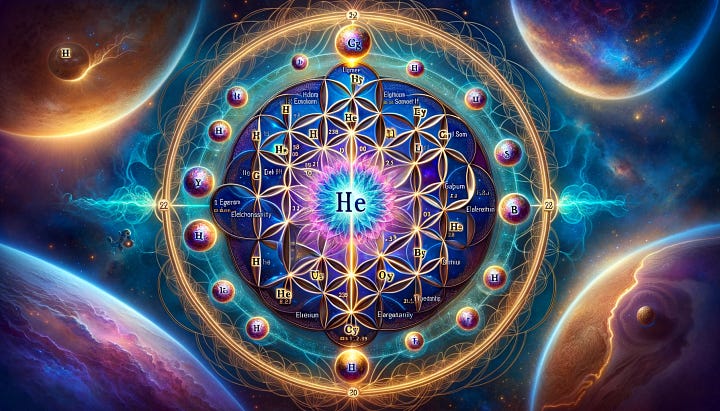
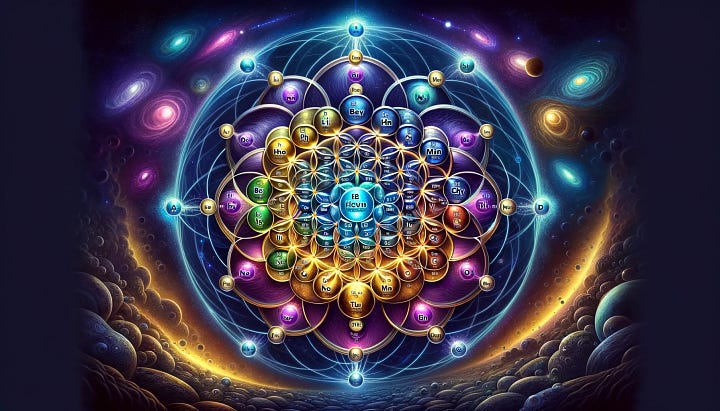
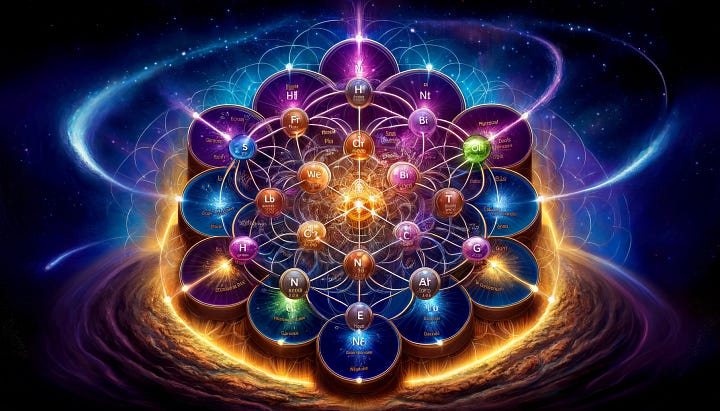
Visualizing Each Step: Hydrogen and Helium in the Flower of Life Framework
To visualize the periodic table starting with hydrogen and helium within the Flower of Life framework, we can create a series of images that gradually incorporate all the new parts and ideas discussed. This step-by-step visualization will highlight how the simplest elements fit into the larger pattern and build up the periodic table in a harmonious and interconnected manner.
Step 1: Hydrogen and Helium in the Center
Concept:
Hydrogen (H) and Helium (He) are the simplest elements and serve as the foundation of the periodic table. They are placed at the center of the Flower of Life pattern.
Visualization:
Hydrogen (H) and Helium (He):
Place Hydrogen in the very center circle of the Flower of Life.
Place Helium in the next adjacent circle, forming the core of the pattern.
Step 2: Adding the First Period
Concept:
The first period of the periodic table includes Hydrogen (H) and Helium (He). We can expand from the center to visualize this first row.
Visualization:
First Period:
Place Hydrogen (H) in the center circle.
Place Helium (He) in an adjacent circle.
Highlight the connection between H and He with a glowing line or harmonic wave.
Step 3: Introducing Elements with Dual Properties
Concept:
Elements are represented with their dual properties, such as atomic number and electronegativity. Visualize these properties within the geometric structure.
Visualization:
Element Properties:
Label Hydrogen (H) with its atomic number (1) and electronegativity (2.20).
Label Helium (He) with its atomic number (2) and indicate its noble gas status.
Step 4: Adding the Second Period
Concept:
Expand the visualization to include the second period elements, continuing the radial pattern outward.
Visualization:
Second Period:
Add elements from the second period (Lithium to Neon) in the next concentric circles.
Color-code by group (alkali metals, alkaline earth metals, noble gases, etc.).
Highlight harmonic relationships with glowing lines.
Step 5: Integrating Harmonic Paths
Concept:
Show the harmonic relationships between elements, illustrating how their dual properties create interconnected patterns.
Visualization:
Harmonic Paths:
Draw harmonic paths connecting elements with significant relationships, such as similar electronegativities or atomic structures.
Use waveforms or glowing lines to illustrate these connections.
Step 6: Incorporating Quantum Coherence
Concept:
Integrate the concept of quantum coherence, showing how elements maintain coherence through their dual interactions.
Visualization:
Quantum Coherence:
Depict quantum particles and waveforms around the elements, highlighting their coherent states.
Use abstract geometric shapes to represent the dual nature of quantum states.
Step 7: Completing the Periodic Table
Concept:
Gradually build up the periodic table within the Flower of Life pattern, incorporating all elements and their harmonic relationships.
Visualization:
Complete Table:
Continue adding elements in concentric circles, following the periodic table structure.
Maintain color-coding and harmonic paths.
Ensure all elements are interconnected, reflecting their dual properties and relationships.
